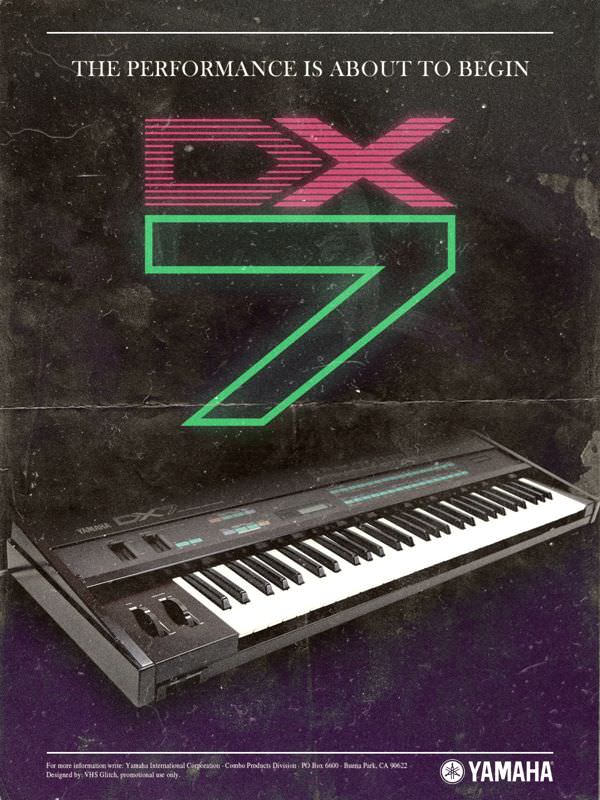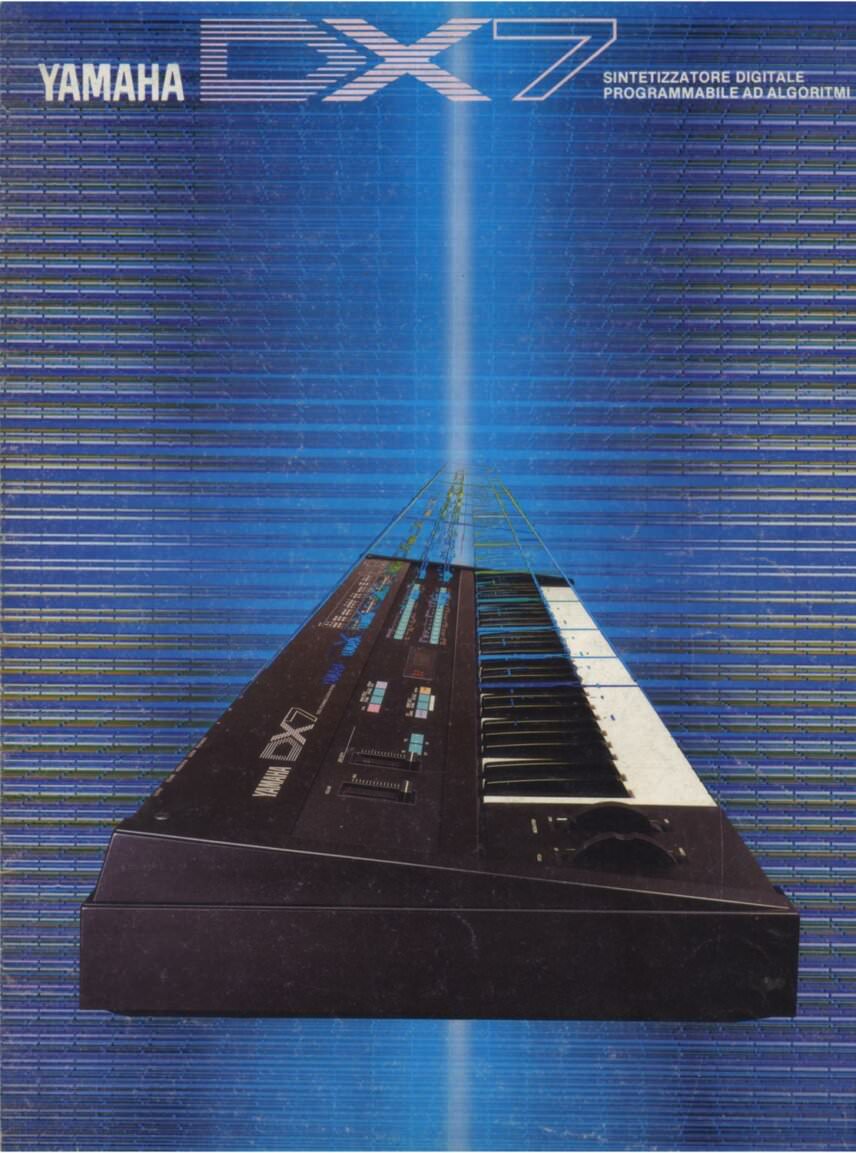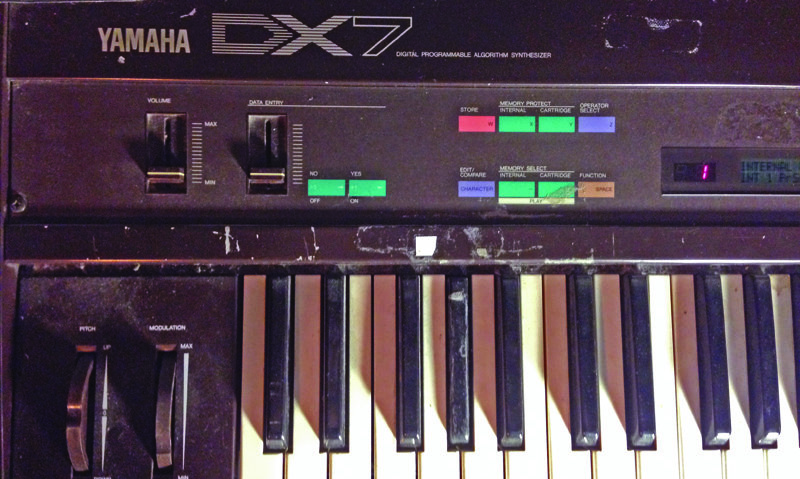We take a deep dive into the history of the Yamaha DX7, perhaps the defining synthesizer of the 1980s.
In the late 1970s synth culture was dominated by what were at the time very expensive analogue synthesisers, which were aimed at the pro market. This was a situation that was to shift beginning in the early 1980s with classic bits of kit such as Roland’s Juno 6, 60 and 106 series and Korg’s Mono/Poly and Polysix. These synths came about as a result of reduced manufacturing costs and managed to make a significant dent in the more mainstream markets. However, the synthesiser that really defined the popular music of the mid-’80s and the dance music of the late ’80s and early ’90s was without a doubt Yamaha’s digital DX7 and its derivatives.

By the time that the DX7 was released in 1983, the fatter sounds of analogue synthesis were beginning to be seen as a bit tired because of their association with the overblown prog-rock stylings of the likes of Yes, Pink Floyd, and Emerson, Lake and Palmer. The ’80s was an era that rejected the past and looked forward to the coming millennium through the lens of the new technologies that were going to take us there. In terms of synth culture, that technology was FM synthesis. Its sound is a technological blend of glassy, fragile highs, punchy mid-range and surprisingly deep pads and washes. It was the perfect instrument to represent the forward-thinking nature of the era.
FM synthesis is fairly complicated. Basically, in order to use an FM synthesizer, you have to forget everything you know about how subtractive synthesis works and go on a deep dive through a series of menus to get it to do what you want. This was a problem with the DX7 as the only way that you had to interact with it was through a tiny LCD display and a load of membrane keys. That meant most people who used the DX7 pretty much had to stick with the presets and it’s these presets that ended up forming what most people would describe as the definitive synth sound of the 1980s. The classic electric piano and bass presets on the DX7 ended up on hits such as ‘Never Gonna Give You Up’ by Rick Astley, ‘Take On Me’ by A-Ha, ‘I Want To Break Free’ by Queen, ‘Money For Nothing’ by Dire Straits and countless other huge hits.
It’s not just pop artists who were enamoured with the DX7 though. It also appeared on ‘Bizarre Love Triangle’ by New Order, ‘Kyoto Song’ by The Cure, ‘Miracles’ by Gary Numan and pretty much everything Brian Eno did during that period.
The DX7 became synonymous with how people thought of synthesis in the 1980s, largely supplanting the earlier analogue instruments and selling by the hundreds of thousands. This success meant that the DX7 ended up with siblings. Some of them were absolutely huge and incredibly rare beasts such as the DX1 and the DX5. Some of them just stripped-down versions such as the DX100 and the DX21, which were aimed more at those on a budget. These, in turn, helped spawn a futuristic new genre called Detroit techno.

Producers such as Jeff Mills, Derrick May, and Octave One needed an instrument which reflected the cold, hard sound of a city. Detroit had lost its economic heart and the DX100 was the perfect instrument to represent that with its harsh, biting sounds. It’s because of the edge that the DX100 brings to the genre that tracks like ‘Strings of Life‘ by Rhythm is Rhythm or ‘Punisher’ by Underground Resistance still sound as relevant as the day that they were first cut into wax.
The next few decades saw a rapid drop in the popularity of the DX7 and its derivatives. People became absolutely sick of hearing the same presets over and over and many producers (with the notable exceptions of the Detroit techno producers mentioned above and Italian house producers such as Don Carlos and Onrico) moved on to other things. The price of the instruments fell sharply and most producers forgot about them as newer and easier to use digital and analogue modelling synths became the norm.
Forgot about them until recently that is. It’s now the easiest thing in the world to MIDI a DX7 into your PC and access thousands of really cool and usable patches through librarian programs or create your own using software editors. It’s been remade into a plugin by Arturia. There’s even a free software replica in the formed of Dexed. This new accessibility has shown the rest of us what Brian Eno and Derrick May knew all along: DX synthesisers are deep, flexible machines with the power to create sounds that will easily slot into a mix or act as a lead instrument in virtually any genre you would care to name.
